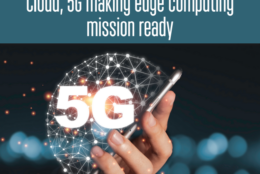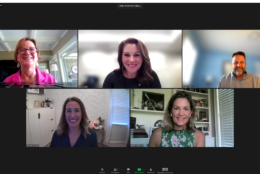SDFM The Business of Defense
-
In this exclusive executive briefing, IT experts outline the significant impacts cloud and 5G have on implementing zero trust architecture.
October 20, 2021 -
Zero trust is the cybersecurity goal federal agencies have for their networks and data. It’s a policy requirement, and it’s an industry best practice. But zero trust is not something you buy, download and install. “Zero trust is really a security philosophy and approach that's built on a few core principles,” said Jason Garbis, the chief product officer for Appgate.
October 19, 2021 -
There are many moving pieces to the vaccine mandate, which are only exacerbated by the sheer number of employees and contractors affected. By prioritizing employee experience to inform decisions made along the way, agencies can develop strategies to navigate the complexities. The easier the process is for employees, the more likely it is to be successful.
October 18, 2021 -
This week we speak with Dr. Ofer Levy, Director of the Precision Vaccines Program at Boston Children’s Hospital, Professor of Pediatrics at Harvard Medical School and member of the FDA COVID Vaccine Advisory Panel. He talks about the recent decision to reject boosters for all recipients 16 and older, saying they didn’t have enough data for younger populations to make that recommendation. He says the review process for emergency authorization for young children aged 5-to-11 will be thorough, rigorous and transparent to the public. His team is also currently working on developing a COVID vaccine, as well as other vaccines that could be deployed for cancer and even opioid use disorder and fentanyl overdose.
October 18, 2021 -
Hosted by Dr. Richard Shurtz and Andrew Mitchell. Sponsored by Stratford University. We expose the way hackers have been stealing cryptocurrency. And we meet the co-founder of the cryptocurrency Ethereum.
October 18, 2021 -
Kevin Brooks, the principal digital strategist for DoD and US Intelligence Community at ServiceNow, said agencies need to recognize the need to do more to care and support their employees. He said this means ensuring the employee is supported and cared for across the continuum of their career through internal and external activities and resources.
October 15, 2021 -
This exclusive e-book highlights some examples of how agencies are benefitting from that concept of data-in-motion to improve mission outcomes.
October 15, 2021 -
During this webinar Marianne Roth, the chief risk officer of the Consumer Financial Protection Bureau, will provide a deep dive into enterprise risk management at CFPB. Additionally, Dan Zitting, the CEO of Galvanize, will discuss how making better use of data and technology can help federal agencies more rapidly allow decision makers address and mitigate risks.
October 15, 2021 -
It is not a surprise that the pandemic sent much of the operations of the Defense Logistics Agency into the virtual realm, just like the majority of private businesses and public agencies that had the capability and type of work to do so.
October 14, 2021 -
In this episode of Market Chat we discuss with 3 field experts how to ensure your marketing is on target with helping government performance, customer experience and operational costs.
October 14, 2021 -
In the fiscal 2022 Defense Authorization Act, lawmakers expanded the number of projects that would receive “colorless money” for software and IT projects. “We have found it extremely successful helping us to make the appropriate trades between doing some legacy stuff which would have been traditionally operation and maintenance dollars versus taking some risk and applying it to new capability in research, develop and technology (RD&T),” said Col. Jennifer Krolikowski, the senior materiel leader for space command and control at the Space Systems Command.
October 14, 2021 -
Executives from the Department of the Navy, U.S. Army Corps of Engineers, Census Bureau and Citrix Systems will discuss how federal leaders can use their experience over the last 20 months to continue to reduce costs and complexities and move further into the cloud and other modern approaches to technology.
October 13, 2021 -
Securing critical infrastructure has been talked about for years, but major attacks against SolarWinds and Colonial Pipeline have increased greatly the focus on how to do so. If it’s been a known concern, why are we still grappling with it?
October 13, 2021 -
Data is the most important resource the federal government has. And the federal government has massive amounts of data at its fingertips. So what’s the biggest obstacle to putting that data to use? Legacy systems.
October 12, 2021 -
“The key theme, and really everything that's coming out of the executive order is about resiliency,” said Christine Barnhart, senior director at Infor for supply chain strategy. “The order is about how we make our supply chains less fragile and more resilient. It's not so much about isolating us from the rest of the world, but really taking out some of the risks, and making sure that we're able to be self-sustaining at least for a period of time.”
October 12, 2021















